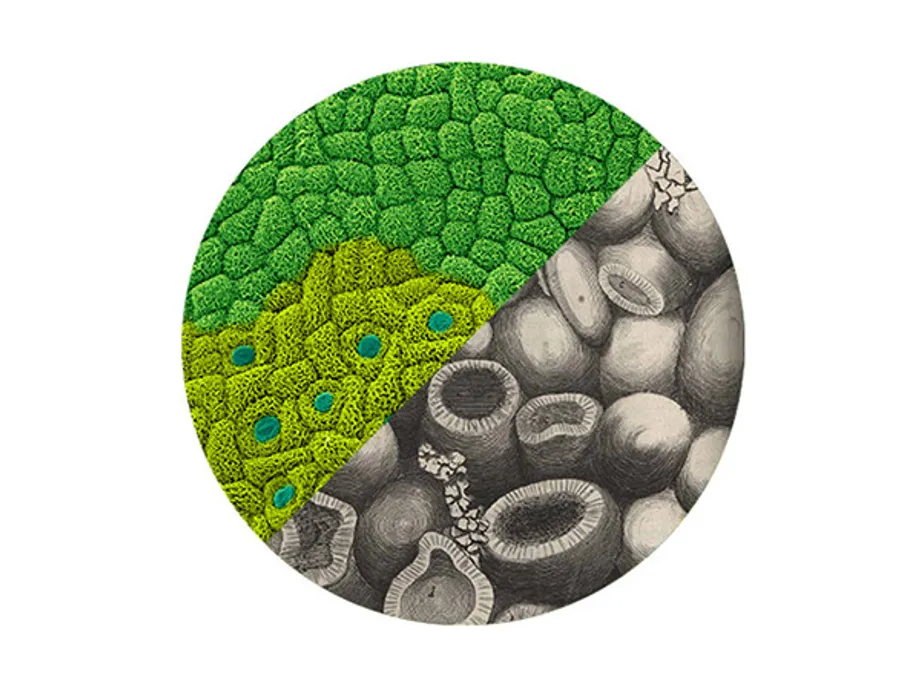Microscope
A microscope is an instrument used to see objects that are too small for the naked eye. The science of investigating small objects using such an instrument is called microscopy.
Of the many types of microscope the most common, and first to be invented, is the optical microscope which uses light to image the sample. Other major types of microscope are the electron microscope, the ultramicroscope and various types of scanning probe microscope.
In October 2014 the Nobel Prize for Chemistry was awarded to Eric Betzig, William Moerner and Stefan Hell for the development of super-resolved fluorescence microscopy.
Image from Micrographia and modern image of electron microscope
The first image is from Robert Hookes Micrographia, published in 1665. The book details Hooke observations through various lenses.
It was the first major publication of the Royal Society, the first scientific best-seller, inspiring wide public interest in the new science of microscopy. The book is noted for coining the biological term cell.
The largest of the images shown is from a stone dug out of a quarry at Kettering, Northamptonshire. The second image comes from an electron microscope which uses a beam of accelerated electrons as a source of illumination rather than light and shows a broccoli flower bud.

